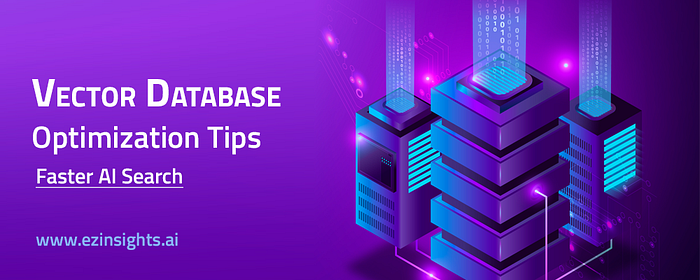Introduction to Vector Database Optimization
Vector databases are a crucial component of modern AI applications, including Retrieval-Augmented Generation (RAG), semantic search, and recommendation systems. Optimizing these databases is vital for achieving speed, cost, and accuracy. In this article, we will explore 14 key optimization techniques that every AI/ML engineer should master.
Choosing the Right Index Type
Different index types balance speed, accuracy, and memory differently. Using the wrong index can lead to slow queries or poor recall. Common options include:
- Flat Index: Exact search, best for small datasets (<100K vectors), slow for large datasets.
- IVF (Inverted File Index): Partitions data into clusters, fast for medium/large datasets.
- HNSW (Hierarchical Navigable Small World): Excellent for high recall on large datasets, uses more memory.
- PQ (Product Quantization): Compresses vectors, saving memory but slightly reducing accuracy.
Tuning Index Parameters
Index parameters directly affect query latency and accuracy. For example, HNSW has efConstruction (during build) and efSearch (during query). Tuning these parameters can significantly impact performance.
Optimizing Embedding Dimensions
High-dimensional embeddings are expressive but computationally expensive. Reducing dimensions saves memory and improves search speed. Techniques like PCA, SVD, or autoencoders can be used to reduce dimensions.
Batch Insertions
Adding vectors one by one creates I/O overhead and slows index building. Batching improves throughput. The ideal batch size depends on system RAM, with larger batches resulting in faster performance but requiring more memory.
Using GPU Acceleration
Searching millions of vectors can be orders of magnitude faster on GPUs. Using GPU acceleration can significantly improve query performance, especially for large-scale, real-time queries.
Hybrid Search (Vectors + Metadata)
Combining vector similarity with structured filters reduces search space and improves relevance. This approach can be used to filter results based on metadata, such as category or price.
Caching Frequent Queries
Common queries, such as top trending products, can be cached to avoid repeated expensive vector searches. Caching can be implemented using a cache layer, such as Redis, to store frequently accessed results.
Normalizing Vectors
Many similarity metrics, like cosine similarity, assume unit-length vectors. Normalizing vectors ensures consistent distances and improves retrieval accuracy.
Optimizing Storage Layout
Storage affects speed and memory. Using techniques like float16 instead of float32, or PQ / OPQ for compressing vectors, can reduce memory usage and improve performance.
Pre-filtering Data Before Indexing
Avoid indexing unnecessary or low-quality vectors. Pre-filtering data can reduce index size, memory usage, and improve query speed.
Scaling with Sharding
Large datasets can overwhelm a single node. Sharding distributes load across nodes, supporting horizontal scaling, higher queries/sec, and lower latency.
Using Approximate Nearest Neighbor (ANN) Search
Exact search is O(n), which can be too slow for millions of vectors. ANN search reduces complexity to sub-linear time, with a slight recall reduction but major performance gain.
Monitoring and Benchmarking Performance
Different datasets behave differently. Tracking metrics like recall@k, query latency, throughput, and memory usage can help identify performance bottlenecks.
Regularly Rebuilding / Compacting Indexes
Indexes degrade over time due to updates/deletes. Regularly rebuilding or compacting indexes maintains fast search and accuracy.
Conclusion
Optimizing vector databases is essential for building scalable, fast, and accurate AI systems. By implementing these 14 techniques, engineers can significantly reduce query latency, save memory and operational costs, improve recall and relevance, and deliver reliable, real-time AI search experiences.
FAQs
- What is vector database optimization?
Vector database optimization refers to the process of improving the performance, efficiency, and accuracy of vector databases, which are used in AI applications like RAG, semantic search, and recommendation systems. - Why is vector database optimization important?
Vector database optimization is important because it directly impacts the speed, cost, and accuracy of AI applications, making it crucial for delivering reliable and real-time search experiences. - What are some common techniques used for vector database optimization?
Common techniques include choosing the right index type, tuning index parameters, optimizing embedding dimensions, batch insertions, using GPU acceleration, and more. - How can I implement vector database optimization in my AI application?
You can implement vector database optimization by applying the techniques outlined in this article, such as using the right index type, tuning parameters, and optimizing storage layout. Additionally, you can use tools and libraries like FAISS, Milvus, and Weaviate to support your optimization efforts.











